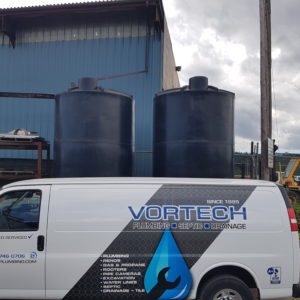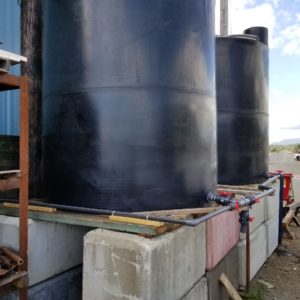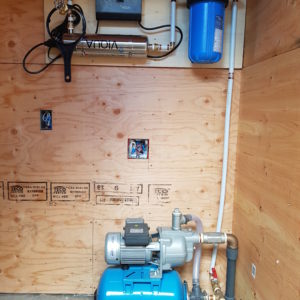“Rainwater is a renewable, sustainable and a high quality water source for home and commercial applications”
What is rainwater harvesting?
Rainwater harvesting is a technique used for collecting, storing, and using rainwater for landscape irrigation as well home domestic services. When it rains the rainwater pours off your roof, down through your gutters and runs off into your yard or street. With rainwater harvesting your rainwater is collected in a water storage tank or cistern and stored for later use. You can also tie the home or buildings “footing” drainage system into a collection system as well should you have seasonal high water tables.
The practice of collecting and storing rain water has been around for thousands of years and is always growing in popularity throughout our communities due to interest in reducing the consumption of potable water and the inherent qualities of rainwater which can be hard to beat with perfect PH balance. It is appropriate for large scale landscapes such as parks, schools, commercial sites, parking lots, and apartment complexes, as well as small scale residential landscapes.
The benefits of harvesting rain water
Rainwater is a renewable, sustainable and a high quality water source for your home, cabin and commercial applications (view the picture below where we have installed a system at a mill, which is used to facilitate the bathrooms as well as kitchen facilities). Some of the benefits of collecting and storing rainwater include*:
- Diminishing flooding, erosion and the flow to storm water drain by reducing peak storm water runoff in the wet seasons
- Reducing water bills and demand on your community’s drinking water supply and well systems by using rainwater for flushing toilets, washing clothes, watering the garden and washing cars
- Improving plant growth by using rainwater for irrigation because stored rainwater is free from pollutants as well as salts, minerals, and other natural and man-made contaminants, pathogins
- Making use of a valuable resource that is FREE because let’s be honest..nothings free anymore!
*As rainwater may be contaminated due to pollutants, it is often not considered suitable for drinking without treatment and this can be accomplished by using a simple UV light for as little as $1,800.00 Installed.
Basic configuration of a Rainwater Harvesting System
The basic principal of Rainwater harvesting systems is to channel rainwater from a catchment surface (roof or other raised solid surface or other viable source of storm water), through a distribution system (gutters, downspouts and pipes) and then into storage tank.
The storage tank can be above ground or underground and can be made from a variety of materials including plastic and metal. Water storage tanks should be covered to prevent mosquito breeding and to reduce evaporation losses, contamination and algal growth. Rainwater harvesting systems require regular maintenance and cleaning to keep the system hygienic.
If the storage tank is elevated you may not require a pump rather operated under gravity pressure. Pumps will allow for a multitude of uses from irrigation to facilitating a home water system.
Below are a couple of recent projects:
Two 2500G Poly tanks collecting water from the building roof system have been installed on concrete blocks. This application stores the water which is facilitating two washrooms and a kitchen facility at a commercial property. The storm water is then passed through a presediment filter then polished using a UV sterilization light making the water potable. A small pump and pressure tank are installed to deliver the water source to the building and fixtures. Tanks can be installed above grade, below grade, in crawl spaces, sheds etc.
This a low maintenance system requiring the sediment filter changed every 6 months and the UV bulb changed annually. Cost effective and simple in its design. Total cost is approximately $300.00 annually to maintain.







 Before you choose a rain harvesting system we need to start by determining your homes water usage as this is not a “one size fits all application”, we want to be fairly accurate. When you review your next water bill, note how many gallons of water you consumed. Then you need to think about how you will be using your stored rainwater. Some common uses are gardening, washing your car, washing off exterior paths and porches and other house and yard use items, etc. Finally you need to determine the square footage of your catchment area (normally your roof) as we apply a unit fixture “load” calculation which will include seasonal water highs.
Before you choose a rain harvesting system we need to start by determining your homes water usage as this is not a “one size fits all application”, we want to be fairly accurate. When you review your next water bill, note how many gallons of water you consumed. Then you need to think about how you will be using your stored rainwater. Some common uses are gardening, washing your car, washing off exterior paths and porches and other house and yard use items, etc. Finally you need to determine the square footage of your catchment area (normally your roof) as we apply a unit fixture “load” calculation which will include seasonal water highs.